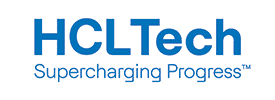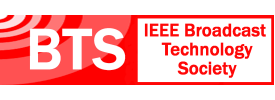- About
- Members
- Sponsors
- Subcommittees
- Technical Documents
- News
- Events
- Spotlight ATSC 3.0
- Contact Us
- Member Login
- Member Meetings
- Advanced Search
Search Site
Member Links
- About
- Members
- Sponsors
- Subcommittees
- Technical Documents
- News
- Events
- Spotlight ATSC 3.0
- Contact Us
- Member Login
- Member Meetings
- Advanced Search
PRESIDENT’S MEMO: A Journey, Not a Destination
Posted on July 10, 2018 in ATSC News
 In July and August, we continue our summertime road trip along the Road to ATSC 3.0. For the ATSC and our members, this expressway has two parallel fast lanes: A) ongoing standards work to further enhance Next Gen TV, and B) support for broadcaster and manufacturer implementations of Next Gen TV powered by ATSC 3.0.
In July and August, we continue our summertime road trip along the Road to ATSC 3.0. For the ATSC and our members, this expressway has two parallel fast lanes: A) ongoing standards work to further enhance Next Gen TV, and B) support for broadcaster and manufacturer implementations of Next Gen TV powered by ATSC 3.0.
As the saying goes, this is a journey, not a destination. With the release of the ATSC 3.0 suite of standards and initial broadcaster deployments in the first half of the year, our journey is well under way. The Technology Group transition is going smoothly with Madeleine Noland from LG now in the driver’s seat as TG Chair, succeeding Rich Chernock who just retired from Triveni Digital and was named by the ATSC Board as TG Chair Emeritus. Under Madeleine’s leadership, our standards work continues apace.
In early July, the Technology Group approved the A/323 Proposed Standard for interactivity and the A/327 Proposed Recommended Practice detailing physical layer implementation guidelines. A/323 covers a dedicated return channel system for ATSC 3.0, defining the uplink for both the physical layer and the media access control layer specifications, while A/327 details ATSC 3.0 physical layer operating modes for broadcasters and provides manufacturers implementation guidelines for flexible configurations of transmitter and receiver designs.
Looking down the road, the ATSC Board of Directors spent two productive days at its summer strategic workshop, focused largely on near- to mid-term broadcaster ATSC 3.0 deployments. For the longer-term, the Board created a new “Planning Team on Future Video Technologies,” which will be chaired by former ATSC Board Chairman Glenn Reitmeier of NBC Universal:
- The new planning team (known as “PT4”) will assess the potential advantages and range of improvements that new video compression coding and other video technologies might provide.
- PT4 will consider technical and market requirements as well as the potential impact on already-deployed ATSC 3.0 receivers. The Planning Team will report its findings and recommendations to the ATSC Board along with a discussion of potential timeframes.
Also noteworthy, as highlighted in this July-August issue of THE STANDARD, is the progress of the new Conformance Implementation Team, chaired by Eurofin’s Bob Campbell. ATSC Implementation Teams – on Conformance, Personalization & Interactivity, and Advanced Emergency Alerting – offer additional opportunities for members to make a difference in important aspects of Next Gen TV deployment.
As the industry progresses down the Road to ATSC 3.0, now is an exciting time for members to get involved and stay involved. If you’re not yet a member, please join us on this journey of a lifetime.
Mark Richer, ATSC President
Posted in ATSC News
News Categories
News Archives
Subscribe
Subscribe to The Standard, our monthly newsletter. Learn More
Join ATSC
ATSC is a membership organization with both voting and observer categories. Voting members include corporations, nonprofit organizations, and government entities, and they participate actively in the work of ATSC. Observers are individuals or entities not eligible to be a voting member.
Subscribe to our Newsletter
Subscribe to The Standard, our monthly newsletter, to stay up-to-date with ATSC news and events around the world.
Site Links
Contact Us
ATSC
1300 I Street NW, Suite 400E
Washington, DC 20005 USA
Do you have questions about ATSC?
About ATSC
ATSC, the Broadcast Standards Association, is an international, non-profit organization developing voluntary standards and recommended practices for digital terrestrial broadcasting. Serving as an essential force in the broadcasting industry, ATSC guides the seamless integration of broadcast and telecom standards to drive the industry forward. Currently, the ATSC 3.0 Standard is providing the best possible solution for expanding the potential of the broadcast spectrum beyond its traditional application to meet changing needs. From conventional television to innovative digital data services, ATSC has one clear goal: to empower the broadcasting ecosystem like never before.
© 2026 ATSC


































